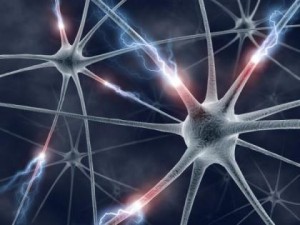
 The intermuscular coordination occurs almost simultaneously with intramuscular coordination, differentiated by the fact that adjustments occur between the muscles involved in the motor act. Increased innervation in the muscles leads to the improvement of coordinative abilities of muscle systems. The increase in intermuscular innervation can be explained by improved coordination of participants muscle groups of a particular movement. Any agonists, antagonists as play an important role (WEINECK, 1999). The intermuscular coordination, however, is represented by the cooperation of several muscles in relation to a sequence of movements that are currently envisaged (HOLLMANN; HETTINGER, 1983). The function for the development of force, which presents the requests of motor units, determines that the intermuscular coordination also appears as an increase in strength tool. Is the recruitment of the necessary muscles and their synergistic to the maximum, in the same proportion that inhibits the antagonistic muscles and maintains the integrity of the joints through the stabilizing muscles. According to this information, Weineck (1999) believes that the reduced intermuscular control, as is the synergistic or antagonistic to, causes a decrease in the development of maximum possible dynamic force. Thus the intermuscular coordination is presented as another event occurred during neural adaptation taking into account the evidence of this increase in trained individuals when compared to untrained individuals.
The intermuscular coordination occurs almost simultaneously with intramuscular coordination, differentiated by the fact that adjustments occur between the muscles involved in the motor act. Increased innervation in the muscles leads to the improvement of coordinative abilities of muscle systems. The increase in intermuscular innervation can be explained by improved coordination of participants muscle groups of a particular movement. Any agonists, antagonists as play an important role (WEINECK, 1999). The intermuscular coordination, however, is represented by the cooperation of several muscles in relation to a sequence of movements that are currently envisaged (HOLLMANN; HETTINGER, 1983). The function for the development of force, which presents the requests of motor units, determines that the intermuscular coordination also appears as an increase in strength tool. Is the recruitment of the necessary muscles and their synergistic to the maximum, in the same proportion that inhibits the antagonistic muscles and maintains the integrity of the joints through the stabilizing muscles. According to this information, Weineck (1999) believes that the reduced intermuscular control, as is the synergistic or antagonistic to, causes a decrease in the development of maximum possible dynamic force. Thus the intermuscular coordination is presented as another event occurred during neural adaptation taking into account the evidence of this increase in trained individuals when compared to untrained individuals.
The neural activation appears as the mechanism responsible for muscle strength gain, what happens when starting a strength training without having relation to hypertrophy of muscle fibers. McArdle et al. (1991) prefer to use the theory assincronizada and synchronized. Reporting that the test pattern recruitment of motor units as the exercising variation is executed, taking into account that not all functional units are requested simultaneously.
In his work, Fleck and Kraemer (2006) conclude that an individual power unit is activated, a very low amount of force will be produced. But if all units are recruited, the maximum muscle force will be produced. So the fact that muscle twitching or stay relaxed, depends on the sum of nerve impulses received by motor units in a given stimulus. The recruitment of motor units is generally determined by the size of their motoneuron (CARROLL et al, 2001), they have the ability to group a number approximately 10-180 fibers per motor unit of slow fibers and 300 to 800 fibers per motor unit of fast fibers (WILLMORE; COSTILL, 1999). One of the largest recruitment of motor neurons characteristics is known as the principle of size.
This principle is characterized by the recruitment of motor neurons increasingly, the lower motor neurons to the biggest (BEAR et al, 2002; FLECK et al, 1996; Smart, 1987). The principle of size gives us an anatomical basis for the recruitment of specific motor units ordered with intent to produce a uniform muscle contraction. So, the motor units become active under the influence of impulses coming out of motor neurons, through which the muscle fibers contract (VERKHOSHANSKI, 2001). With the rate of the increased nervous system impulses, motor drives enable generate more force, thus becoming another example of neural adaptation.
Rerefence image: BP Blogspot